Lorsque vous quittez les pistes damées, choisir les bons skis - touring ou randonnée - peut faire toute la différence dans votre aventure. Voici un résumé rapide :
- Les skis de touring sont légers et conçus pour l'efficacité en montée. Ils sont parfaits pour les longues ascensions et fonctionnent mieux avec des fixations qui laissent vos talons libres.
- Les skis de randonnée sont plus robustes et larges, axés sur la performance en descente dans la neige profonde et les terrains difficiles.
Mais un nouveau venu bouscule les choses : Snowfeet WALKSKI Backcountry Touring Skis. Ces skis compacts de 100 cm (39 pouces) allient portabilité et facilité d'utilisation. Ils se glissent dans un sac à dos, fonctionnent avec des bottes d'hiver ou de snowboard classiques, et simplifient les transitions sur terrain mixte - le tout pour 675 $.
Comparaison rapide
| Caractéristique | Skis de touring | Skis de randonnée | Snowfeet WALKSKI (100 cm) |
|---|---|---|---|
| Longueur | 150–180 cm | 160–190 cm | 100 cm |
| Poids par ski | 3–5 lbs | 4–7 lbs | Moins de 3 lbs |
| Compatibilité des bottes | Bottes de randonnée uniquement | Bottes alpines uniquement | Compatible avec des chaussures d'hiver ou de snowboard |
| Portabilité | Encombrant | Encombrant | Compatible avec un sac à dos |
| Gamme de prix | 400 $–800 $+ | 500 $–1 000 $+ | $675 |
Si vous êtes axé sur les montées, optez pour les skis de randonnée. Pour la neige profonde et les descentes raides, les skis de backcountry sont votre choix. Mais si vous voulez un équipement léger, facile à utiliser et portable qui fonctionne pour les deux, Snowfeet pourrait être votre meilleure option.
Comment choisir votre premier équipement de ski alpin de randonnée avec SkiEssentials.com - Chaussures, fixations et skis
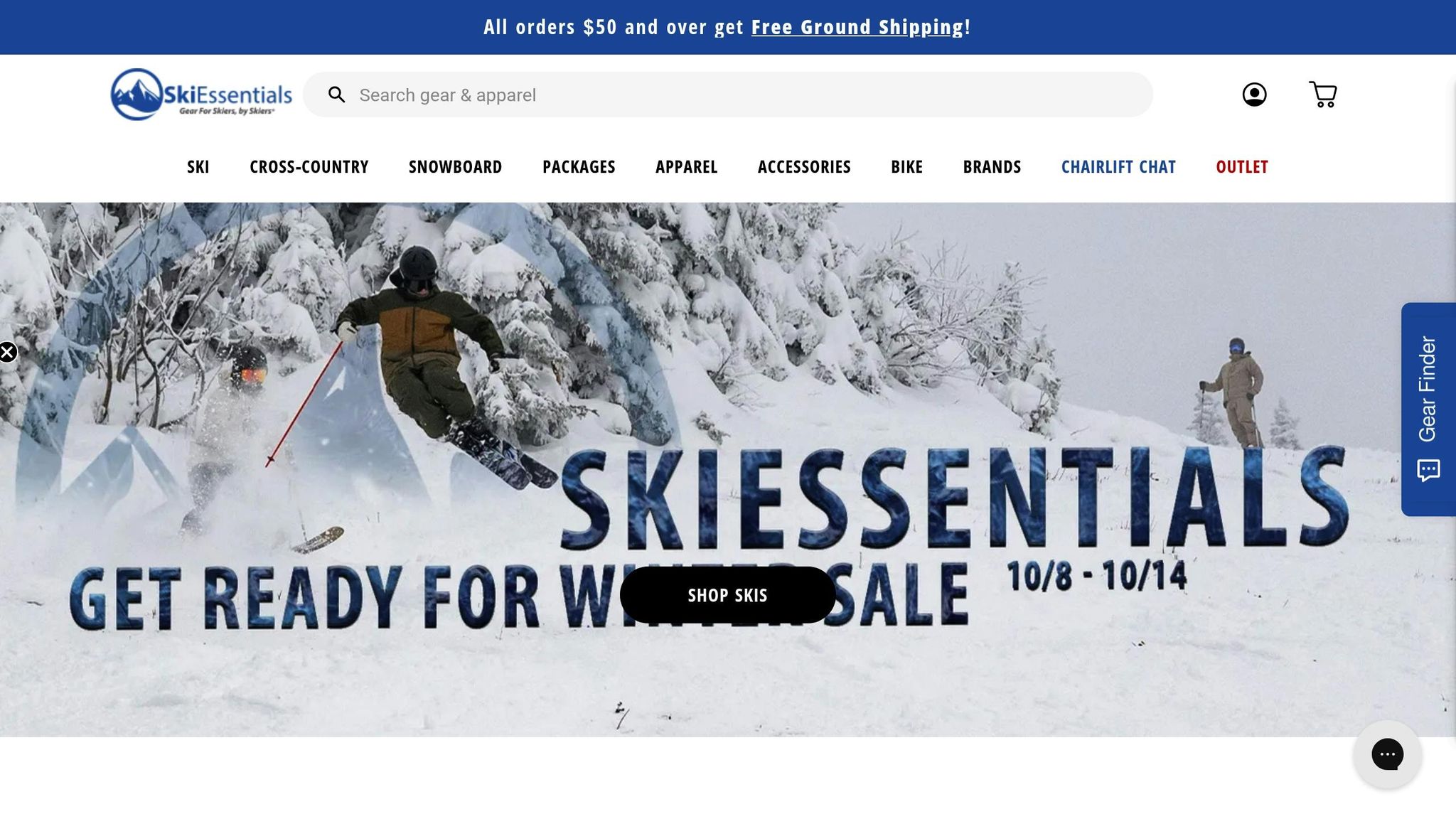
Conception et fonction des skis de randonnée
Les skis de randonnée sont conçus dans un but principal : rendre les déplacements en montée aussi efficaces que possible. Contrairement aux skis que vous utiliseriez en station, qui sont axés sur la performance en descente, les skis de randonnée trouvent un équilibre entre légèreté et stabilité suffisante pour gérer des conditions de neige imprévisibles. Ce mélange de caractéristiques améliore non seulement leurs performances mais les rend aussi plus faciles à manipuler lorsque vous êtes en pleine nature.
Construction légère pour les déplacements en montée
La magie des skis de randonnée réside dans leur construction légère. Les fabricants utilisent des matériaux avancés pour éliminer chaque once superflue car même un peu de poids en plus peut rendre les montées raides beaucoup plus fatigantes.
Prenez par exemple les skis de randonnée WALKSKI Backcountry de Snowfeet. Avec seulement 100 cm (39 pouces) de long, ils sont conçus pour une efficacité en montée. Contrairement aux skis de randonnée traditionnels, qui peuvent sembler lourds et encombrants, le design compact de Snowfeet réduit le poids en balancement, rendant les montées moins épuisantes.
La plupart des skis de randonnée sont équipés de fixations qui permettent de lever le talon pour les montées et de le bloquer pour les descentes. Snowfeet va plus loin en proposant des skis plus courts qui permettent des transitions rapides, réduisant le temps d'installation et facilitant la manipulation du matériel. Ce design réfléchi s'étend à la manière dont les peaux et les fixations s'intègrent parfaitement.
Peaux et fixations : caractéristiques clés
Les peaux de phoque sont un élément essentiel des équipements de randonnée traditionnels. Ces bandes adhésives, avec leurs fibres directionnelles, accrochent la neige lors de la montée tout en permettant une glisse fluide à la descente.
Les fixations, en revanche, sont souvent plus compliquées. De nombreux systèmes traditionnels incluent des mécanismes de pivot et de déclenchement qui peuvent ajouter du temps et du coût. Snowfeet simplifie les choses en fonctionnant avec des chaussures d'hiver ou de snowboard standard, éliminant le besoin d'un équipement de randonnée spécialisé et coûteux. De plus, la longueur plus courte des skis améliore le contrôle des carres lors des montées. Sur des sections modérées en montée, de nombreux utilisateurs peuvent compter uniquement sur leur technique, évitant complètement le besoin d'installations complètes de peaux. Cette simplicité, combinée au design compact, rend les skis Snowfeet à la fois pratiques et conviviaux.
Skis compacts pour contrôle et portabilité
C'est là que Snowfeet se démarque vraiment. Leurs skis de 100 cm sont assez petits pour tenir dans un sac à dos, ce qui signifie que vous pouvez facilement les emmener lors de sorties en pleine nature plus profondes, prendre les transports en commun, ou même voyager à l'international sans avoir à gérer des frais de bagages surdimensionnés. Leur portabilité change la donne.
Mais ce n'est pas qu'une question de commodité - les skis plus courts vous offrent aussi un meilleur contrôle. Ils rendent les transitions d'arête à arête plus rapides et vous aident à naviguer avec précision dans des espaces étroits, comme des forêts denses ou des couloirs étroits. Cette agilité est un grand avantage par rapport aux skis plus longs et plus encombrants.
Pour les débutants, le design épuré de Snowfeet est un avantage. Les configurations traditionnelles peuvent être intimidantes par leur encombrement et leur poids, mais Snowfeet offre une alternative plus simple et accessible. Cela permet aux nouveaux skieurs de se concentrer sur l'apprentissage et la construction de la confiance sans être submergés par un équipement lourd et encombrant.
Conception et fonction des skis de hors-piste
Les skis de hors-piste sont conçus pour affronter des terrains accidentés et variés, avec un fort accent sur la performance en descente. Décomposons quelques caractéristiques clés comme la portance, la durabilité et la maniabilité qui font ressortir ces skis.
Skis plus larges pour une meilleure flottaison dans la neige profonde
L'une des premières choses que vous remarquerez sur les skis de hors-piste est leur largeur. La plupart des modèles font au moins 95 mm au patin, tandis que les options axées sur la poudre peuvent dépasser 105 mm. Cette largeur supplémentaire crée une plus grande surface, vous aidant à rester à la surface de la neige profonde au lieu de vous enfoncer.
Mais voici la surprise - plus grand n'est pas toujours mieux. Prenez par exemple les skis de randonnée Backcountry WALKSKI 100 cm de Snowfeet. Ces skis compacts prouvent que vous n'avez pas besoin d'une longueur excessive pour bien performer en poudreuse. Leur taille plus petite offre une excellente portance tout en restant légers et efficaces, ce qui est crucial quand chaque gramme de matériel compte en hors-piste.
Conçus pour résister aux terrains accidentés
Les terrains accidentés exigent des skis robustes. Les modèles de hors-piste sont généralement renforcés avec des carres durables et des matériaux solides pour gérer tout, des rochers tranchants aux plaques de glace. Le compromis ? Les skis traditionnels ajoutent souvent du poids supplémentaire pour cette durabilité.
Snowfeet adopte une approche différente. En utilisant des matériaux de haute qualité et des carres métalliques, ils ont réussi à trouver un équilibre entre durabilité et légèreté. Cela signifie que vous pouvez affronter en toute confiance des itinéraires rocheux et des descentes techniques sans vous sentir alourdi ou trop fatigué.
Maniabilité facile dans les espaces restreints
Les skis plus longs peuvent être délicats lorsque vous essayez de faire des virages rapides dans des espaces étroits, comme serpenter entre des arbres denses ou naviguer dans des couloirs raides et étroits. Leur longueur étendue peut ralentir les transitions et les rendre moins précises.
C'est là que le design compact de Snowfeet brille. Leurs skis plus courts facilitent les changements rapides de direction, vous aidant à éviter arbres, rochers et autres obstacles avec aisance. De plus, cette agilité accrue change la donne dans des conditions de neige imprévisibles - que ce soit de la poudreuse, de la croûte ou de la glace - vous offrant plus de contrôle et renforçant votre confiance sur les pistes.
sbb-itb-17ade95
Ski de randonnée vs Ski de hors-piste : Comparaison directe
Décomposons les différences entre ces types de skis pour voir lequel convient le mieux à vos escapades hivernales.
Tableau comparatif : Ski de randonnée vs Ski de hors-piste
| Caractéristique | Skis de touring traditionnels | Skis de randonnée traditionnels | Snowfeet* WALKSKI (100 cm) |
|---|---|---|---|
| Longueur | 150–180 cm | 160–190 cm | 100 cm |
| Poids | 3–5 lbs par ski | 4–7 lbs par ski | Moins de 3 lbs par ski |
| Largeur | 85–95 mm | 95–115 mm | Optimisé pour un contrôle précis |
| Portabilité | Nécessite un porte-bagages ou un sac à skis | Nécessite un porte-bagages ou un sac à skis | Se glisse dans un sac à dos |
| Courbe d'apprentissage | Modéré à raide | Raide | Rapide et facile |
| Compatibilité des bottes | Bottes de randonnée requises | Bottes alpines requises | Compatible avec chaussures d'hiver, bottes de snowboard ou bottes de ski |
| Gamme de prix | 400 $–800 $+ | 500 $–1 000 $+ | À partir de 675 $ |
| Rangement | Nécessite un espace important | Nécessite un espace important | Nécessite un espace minimal |
Ce tableau montre comment Snowfeet* révolutionne le jeu avec son design compact et polyvalent, offrant une alternative fraîche aux configurations traditionnelles.
Forces et faiblesses clés
Chaque type de ski a ses forces et ses compromis évidents. Les skis de randonnée traditionnels sont conçus pour l'efficacité en montée, ce qui en fait un choix privilégié pour les longues ascensions. Cependant, ils peuvent être coûteux, et leur courbe d'apprentissage modérée peut représenter un défi pour les débutants. Les skis de backcountry, quant à eux, excellent en descente, mais leur longueur et leur poids supplémentaires peuvent compliquer les virages serrés et le transport. Ils nécessitent également une courbe d'apprentissage plus raide et un équipement spécialisé.
Puis il y a Snowfeet*. Ces skis de randonnée WALKSKI Backcountry de 100 cm évitent les compromis habituels. Ils sont légers, ultra-portables et faciles à ranger - en plus, ils sont adaptés aux débutants. Que vous slalomiez entre les arbres, affrontiez des pentes raides ou exploriez de nouveaux terrains, leur design compact les rend faciles à manier. Et contrairement aux skis traditionnels, vous n'aurez pas besoin d'une pièce entière pour les stocker ni d'un porte-bagages sur le toit pour les transporter.
Snowfeet* offre un niveau de commodité et d'adaptabilité que les skis traditionnels ne peuvent tout simplement pas égaler. Fini de traîner un équipement encombrant ou de lutter avec une courbe d'apprentissage raide - ces skis sont conçus pour rendre vos aventures plus fluides, plus simples et plus amusantes.
Choisir la bonne option avec Snowfeet*
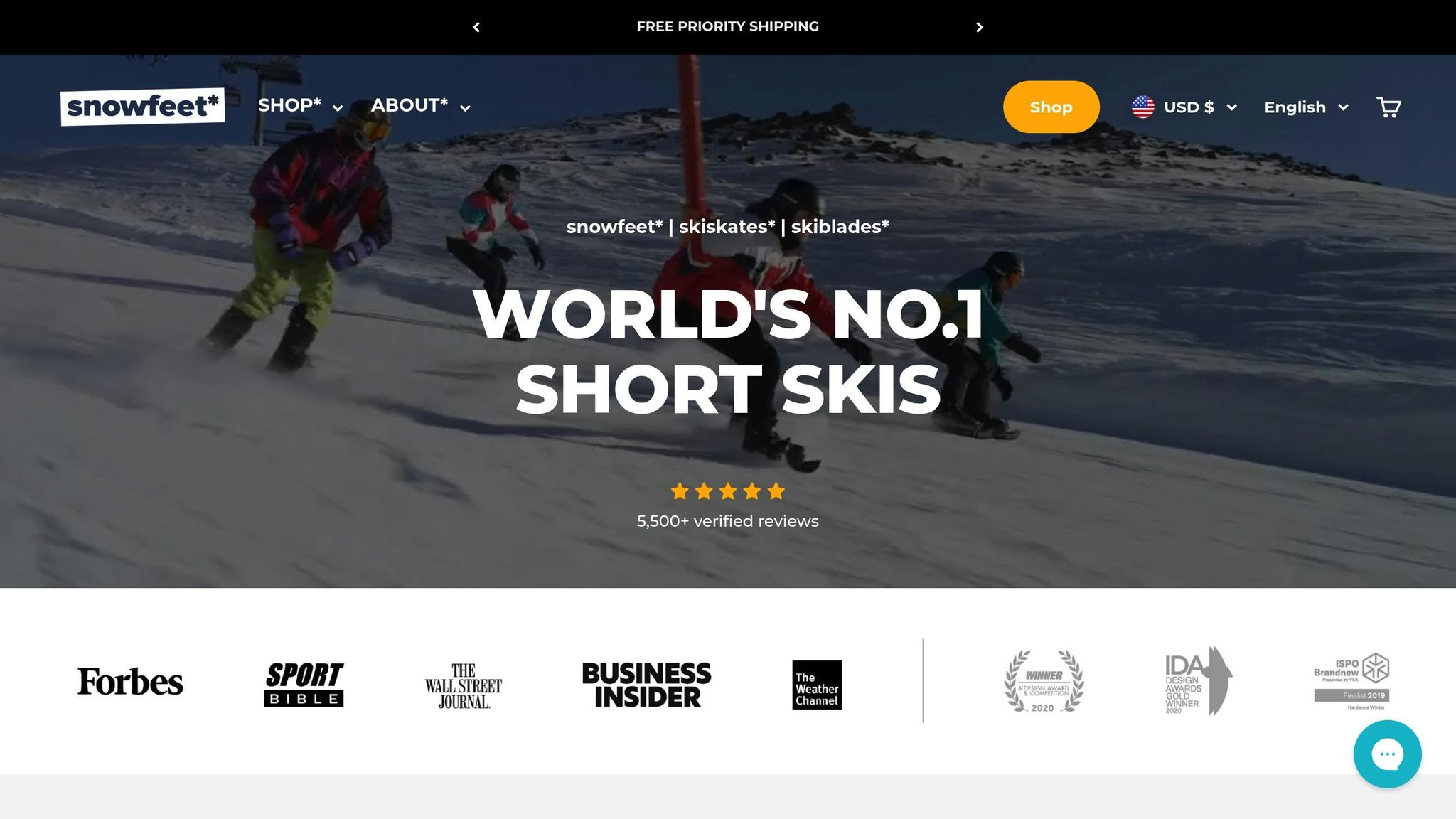
Trouver le meilleur équipement de ski dépend de vos objectifs, de votre expérience et du type d’aventures hivernales que vous recherchez. Explorons qui pourrait bénéficier de chaque option et pourquoi Snowfeet* pourrait être l’alternative révolutionnaire que vous attendiez.
Qui devrait choisir les skis de randonnée classiques ?
Les skis de randonnée traditionnels peuvent représenter un certain engagement. Ils nécessitent des chaussures et fixations spécialisées, ce qui peut compliquer et alourdir votre équipement. Voici les Snowfeet* WALKSKI Backcountry Touring Skis - une option plus simple et portable. Ces skis fonctionnent avec des chaussures d’hiver classiques, ce qui les rend beaucoup plus faciles à utiliser. Avec seulement 100 cm de long, ils sont conçus pour une montée efficace tout en restant légers et sans tracas.
Si vous prévoyez d’affronter de la poudreuse profonde ou des descentes techniques, consultez la section suivante sur les skis de randonnée.
Qui devrait choisir les skis de randonnée ?
Les skis de randonnée sont conçus pour ceux qui recherchent la performance en neige profonde et sur terrains difficiles. Ils sont parfaits pour les skieurs avancés qui aiment les descentes raides, les journées en poudreuse et les aventures hors-piste. Avec une largeur au patin plus large (90–115 mm) et une construction robuste, ces skis offrent la stabilité et la portance nécessaires pour des conditions exigeantes.
Cela dit, les équipements traditionnels de ski hors-piste nécessitent souvent des chaussures alpines et ont une courbe d’apprentissage plus raide - ce qui peut être difficile pour les débutants.
C’est là que Snowfeet* se démarque. Bien qu’ils n’offrent pas la même portance que des skis de randonnée classiques en poudreuse très profonde, ils sont une option beaucoup plus conviviale. Leur design compact les rend parfaits pour naviguer hors-piste, dans les bois serrés et sur terrains variés, sans l’encombrement des skis traditionnels.
Pourquoi Snowfeet* est le choix parfait
Snowfeet* combine le meilleur du ski de randonnée et du ski hors-piste sans les compromis habituels. Voici pourquoi ils sont une option remarquable :
- Facilité d’utilisation : Pas besoin de chaussures spéciales - Snowfeet* fonctionne avec des chaussures d’hiver standard, des boots de snowboard ou des chaussures de ski. Cela rend les sports d’hiver plus simples et accessibles.
- Adapté aux débutants : Une courbe d’apprentissage plus courte signifie plus de plaisir, plus vite. Les randonneurs et raquetteurs les adorent pour étendre leur terrain de jeu, et les familles les trouvent parfaits pour initier les enfants au ski.
- Design portable : Avec 100 cm de long, ces skis tiennent dans un sac à dos - pas besoin de porte-skis sur le toit ou de housse. Parfaits pour randonner vers des zones isolées ou alterner marche et ski lors d’aventures sur terrains variés. De plus, ils sont idéaux pour ceux qui ont peu d’espace de rangement.
- Excellente maniabilité : Leur longueur plus courte les rend faciles à manier, surtout dans des endroits étroits comme les sentiers boisés ou les terrains techniques. Ils sont précis, réactifs et moins fatigants à utiliser.
- Option abordable : À partir de 675 $, les Snowfeet* WALKSKI Backcountry Touring Skis sont bien moins chers que les équipements traditionnels. Quand on prend en compte le coût des chaussures, fixations et autres accessoires, les économies sont vraiment significatives.
Les experts s’accordent à dire que des skis plus courts et plus légers offrent un meilleur contrôle et sont plus faciles à utiliser, surtout pour les débutants ou ceux qui préfèrent une expérience moins exigeante physiquement. Snowfeet* abaisse la barrière d’entrée, rendant les sports d’hiver plus accessibles et amusants pour tous.
Que vous soyez novice en sports d’hiver, skieur expérimenté cherchant une solution plus portable, ou quelqu’un qui privilégie la commodité à la performance traditionnelle, Snowfeet* vous donne la liberté d’explorer les paysages hivernaux à votre façon.
Conclusion : Trouver la liberté sur la neige avec Snowfeet*
Choisir entre skis de randonnée et skis de hors-piste revient souvent à peser la simplicité contre la complexité. Les skis de randonnée sont fantastiques pour l'efficacité en montée mais nécessitent des chaussures et fixations spécialisées. Les skis de hors-piste, quant à eux, excellent dans la poudreuse profonde mais demandent une courbe d'apprentissage importante et un prix élevé. C’est là que Snowfeet* intervient pour offrir une alternative rafraîchissante.
Snowfeet* combine le meilleur des deux mondes. Les WALKSKI Backcountry Touring Skis, d'à peine 100 cm de long, allient portabilité et facilité d'utilisation dans un design élégant - le tout pour 675 $. C’est une fraction du coût d’un équipement traditionnel complet. Que vous montiez, descendiez ou affrontiez un terrain mixte, ces skis courts rendent les sports d’hiver plus accessibles. Ils sont parfaits pour les sentiers boisés étroits, les paysages variés, ou même pour apprendre à skier à votre famille.
Alors que des marques traditionnelles comme Rossignol, Salomon et K2 continuent de dominer avec leur équipement plus volumineux et complexe, Snowfeet* emprunte une voie différente. Il privilégie la liberté et la portabilité, laissant derrière lui les installations dépassées et encombrantes du passé.
La décision vous appartient : rester avec les complexités du ski traditionnel ou adopter la simplicité et la liberté que Snowfeet* offre. Avec Snowfeet*, les aventures hivernales deviennent illimitées.
FAQ
Qu'est-ce qui rend les Snowfeet WALKSKI Backcountry Touring Skis meilleurs que les skis de randonnée ou de hors-piste traditionnels ?
Snowfeet WALKSKI Backcountry Touring Skis apportent une nouvelle dimension au ski avec leur design compact et léger - environ 40 % plus courts que vos skis habituels. Cela les rend super faciles à transporter, à ranger dans votre voiture, ou même à glisser dans un sac à dos. Vous partez sur un sentier isolé ou planifiez un voyage de ski de dernière minute ? Ces skis sont vos alliés. Vous n’aurez pas besoin de porte-skis encombrants ni d’équipements de transport sophistiqués, ce qui simplifie grandement la vie.
Leur longueur plus courte ne concerne pas seulement la portabilité - elle signifie aussi un meilleur contrôle et une maniabilité facilitée. Cela en fait un excellent choix pour les débutants ou les skieurs occasionnels qui veulent simplement une expérience fluide et sans complications. Que vous affrontiez un terrain de backcountry ou que vous fassiez une session de ski rapide, les skis Snowfeet WALKSKI gardent les choses simples, pratiques et amusantes - sans les tracas des skis longs traditionnels.
Comment les Snowfeet WALKSKI Backcountry Touring Skis gèrent-ils la poudreuse profonde par rapport aux skis de backcountry traditionnels ?
Les Snowfeet WALKSKI Backcountry Touring Skis sont un choix remarquable pour affronter la poudreuse profonde. Grâce à leur construction légère et compacte, ils sont incroyablement agiles et faciles à contrôler. Leur longueur plus courte facilite les virages rapides, même dans des conditions de poudreuse difficiles ou étroites. Si vous cherchez des skis qui allient polyvalence et performance, ceux-ci méritent votre attention.
Contrairement aux skis de backcountry traditionnels plus volumineux, les Snowfeet WALKSKI offrent une option portable et facile à utiliser. Leur design permet une glisse fluide et une maniabilité sans effort, vous donnant la confiance nécessaire pour naviguer dans la neige molle comme un pro. Pour les amateurs de poudreuse qui apprécient la commodité et le contrôle, ces skis représentent une nouvelle approche des aventures en backcountry.
Les Snowfeet WALKSKI Backcountry Touring Skis sont-ils adaptés aux débutants, et en quoi sont-ils plus faciles à utiliser que les skis traditionnels ?
Si vous débutez en ski, les Snowfeet WALKSKI Backcountry Touring Skis sont une option fantastique pour commencer. Grâce à leur design compact et léger, ils sont beaucoup plus faciles à manier que les skis longs traditionnels. Cela les rend moins intimidants, permettant aux débutants de se concentrer sur le plaisir plutôt que de lutter avec un équipement encombrant.
L'un de leurs atouts majeurs est qu'ils fonctionnent avec des chaussures d'hiver classiques - pas besoin d'investir dans des chaussures de ski spécialisées. Cela simplifie non seulement l'installation, mais les rend aussi très pratiques à transporter. De plus, leur longueur plus courte vous offre un meilleur contrôle et une meilleure maniabilité, facilitant la navigation sur les sentiers de backcountry en toute confiance. Parfait pour apprendre et explorer sans tracas !
Articles de blog associés
- Skis de trekking ou raquettes ? Choisir votre équipement hivernal pour le backcountry
- Les skis All-Mountain sont-ils bons pour la randonnée ? Un guide rapide
- Meilleurs skis de randonnée & backcountry pour 2025 (Débutant à avancé)
- À quoi servent les 'Freeride Skis' ? Explorer les aventures hors-piste (2025)







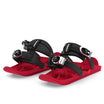
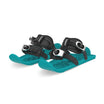












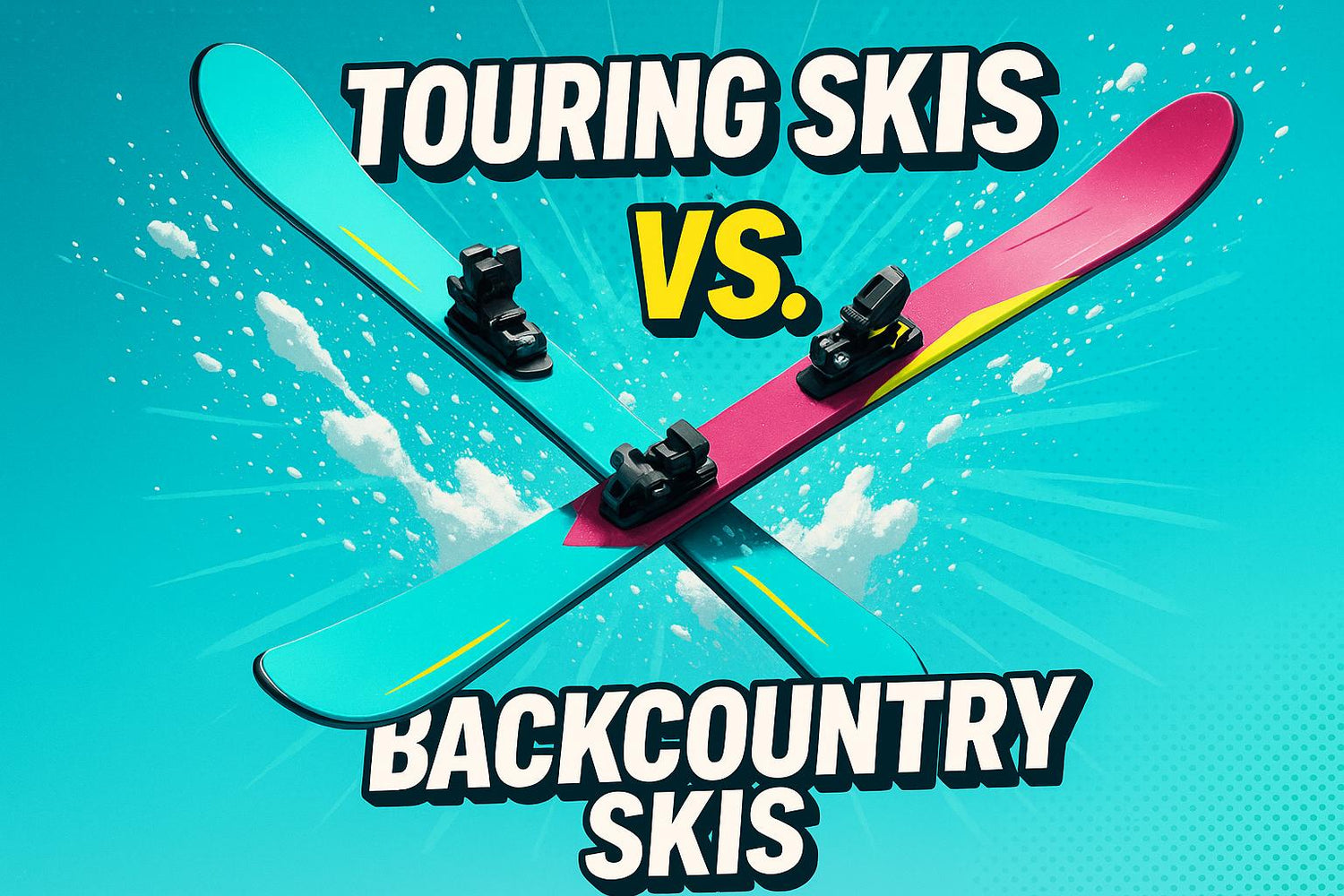
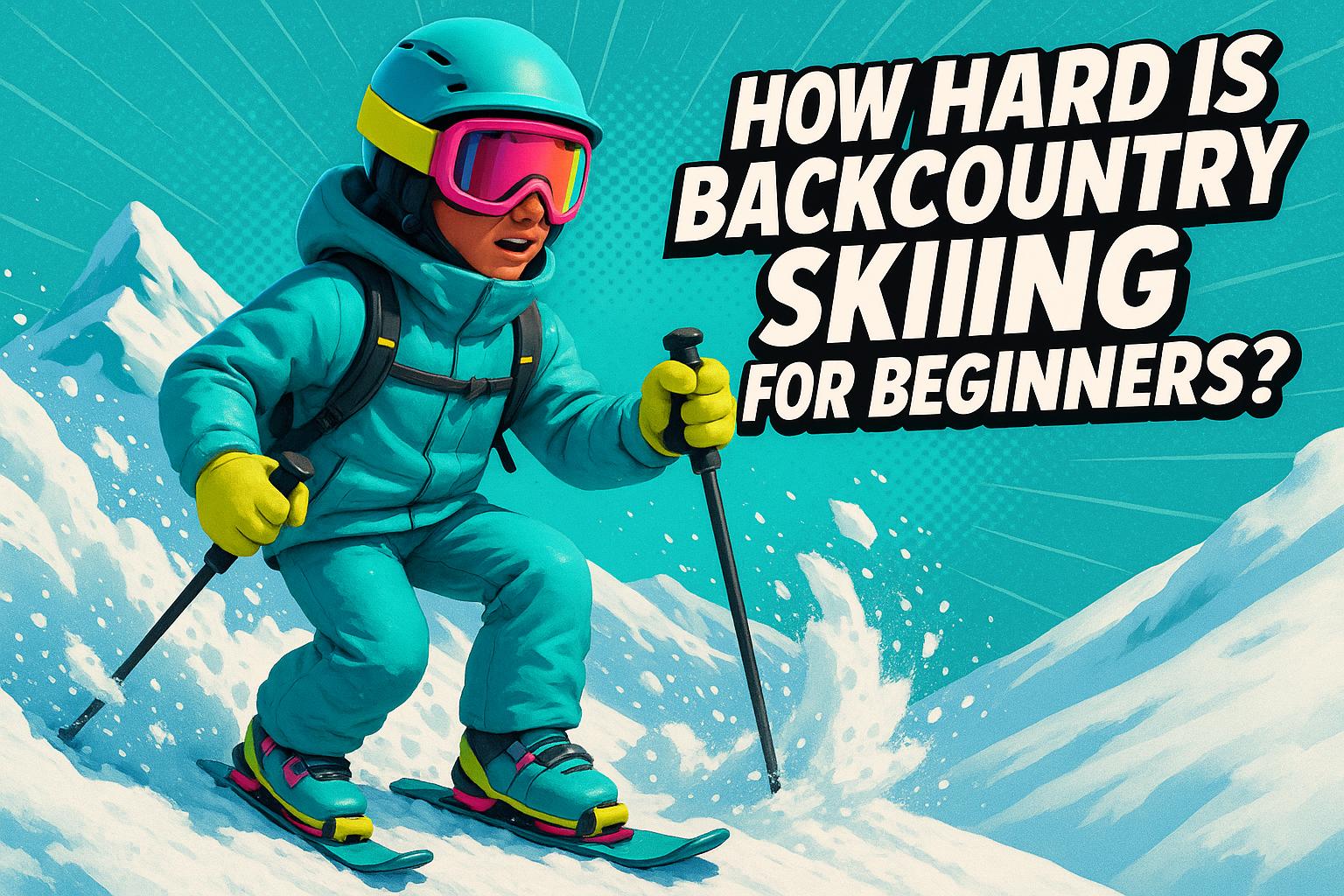





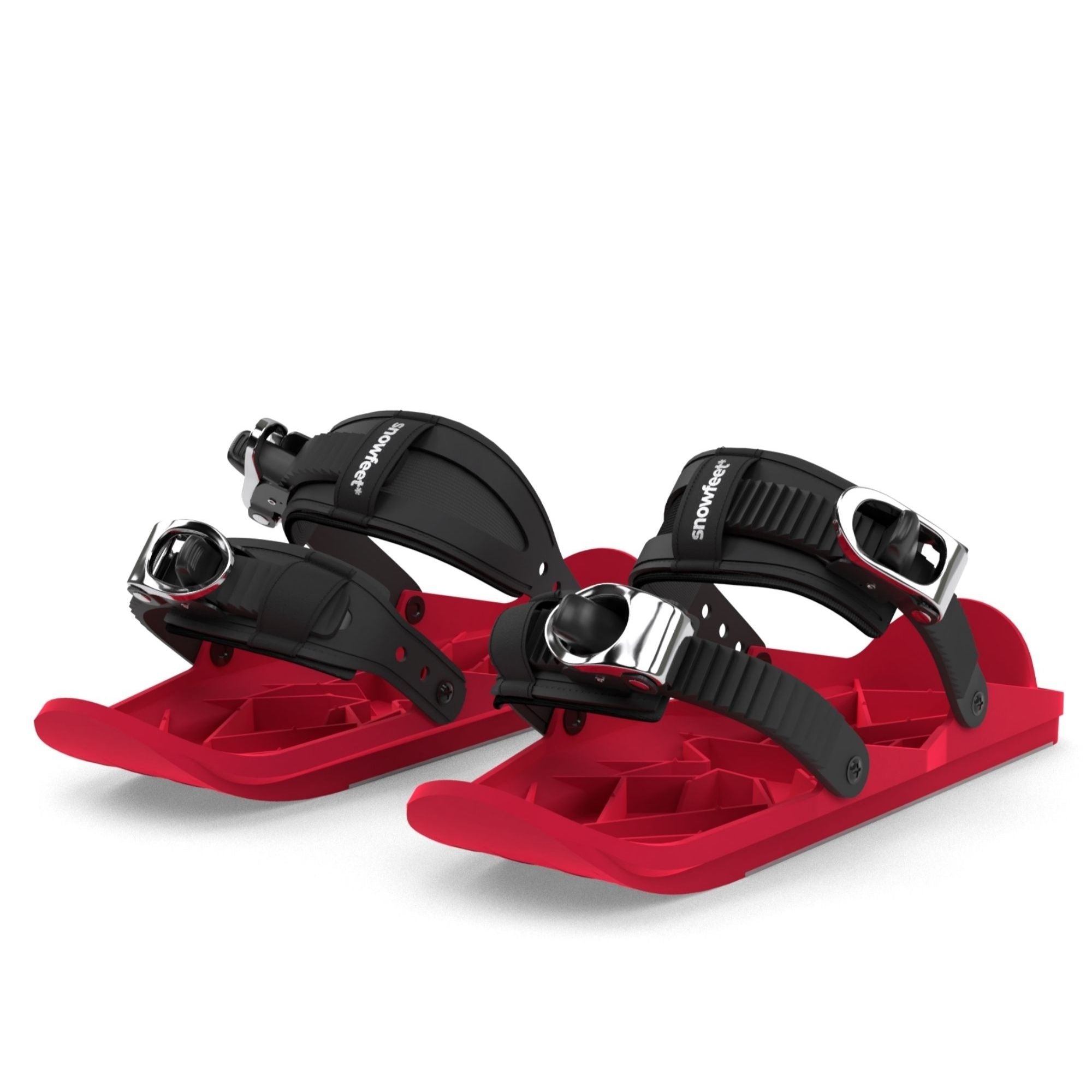
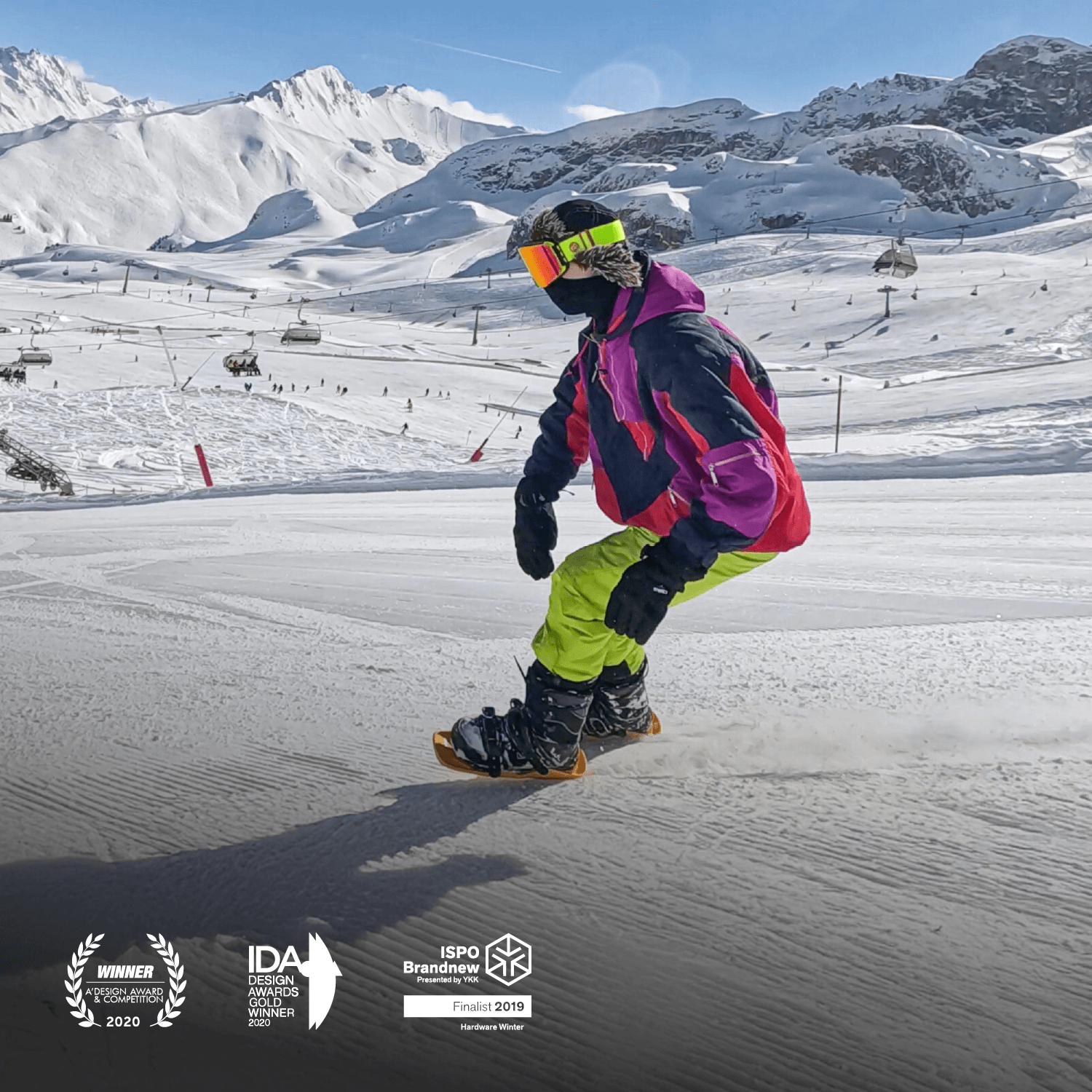




1 commentaire
Maxwell
I recently discovered a new AI tool that plans my day automatically — it’s crazy how much time it saves.
If you often feel overwhelmed or disorganized, you should try it.
👉 https://t.ly/OBuX0
Laisser un commentaire
Ce site est protégé par hCaptcha, et la Politique de confidentialité et les Conditions de service de hCaptcha s’appliquent.